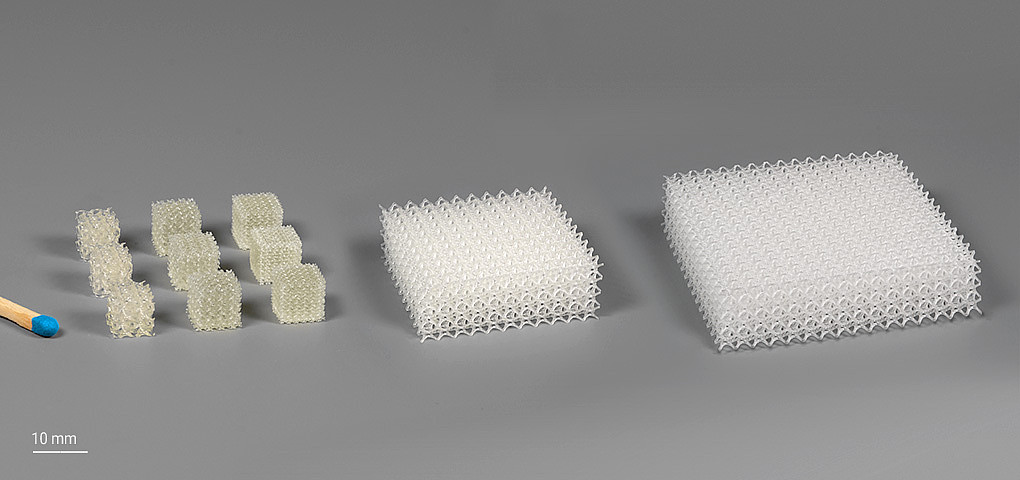BICO subsidiary Nanoscribe is known for its two-photon polymerization (2PP), capable of producing highly detailed, complex objects at the nano- and microscale. Now, the company has announced the ability of its Quantum X shape 3D printer to 3D print structures at the millimeter and centime scale. With the new Extra Large Features (XLF) Print Set, it’s now possible to produce large batches of tiny parts or bigger, extremely detailed objects.
Nanoscribe suggests that 2PP is capable of achieving 100 times the precision of other technologies, such as high resolution stereolithography or digital light projection or even projection micro-stereolithography (PµSL). However, its ability to 3D print objects just a few millimeters in size limited its throughput applications. To achieve greater scale, the XLF Print Set relies on a new air objective with a 5x magnification factor, thus increasing the print field diameter up to 3,200 µm and working distance of 18.5 mm. Nanoscribe also boasts a high scanning speed, adjustable voxel sizes, and sensitive resin.
The Quantum X shape is one of Nanoscribe’s new 3D printers in its Quantum X line, which also includes the Quantum X align for photonics production, the Quantum X bio for bioprinting, and the Quantum X for grayscale lithography. Image courtesy of Nanoscribe.
The XLF Print Set enables the production of centimeter-sized parts with precision two to five times that of other microfabrication technologies, according to the company. With a single pass, items up to 30 cubic centimeters in size can be 3D printed. This means that large objects with very fine details or batches of millimeter-sized parts can be 3D printed, such as millimeter-scale connectors and housing, microfluidics, and scaffolds for biomedical research.
“The XLF Print Set brings a whole new world of opportunities to the Quantum X shape,” says Dr. Michael Thiel, Chief Science Officer and Co-Founder of Nanoscribe. “First and foremost, you gain a tremendous speed up in manufacturing large print quantities of voluminous objects in one batch,” Thiel summarizes one key benefit of the new XLF Print Set.
There are other processes out there competing for rapid production of small, finely detailed objects. So far, Readily 3D is able to 3D print centimeter-scale items in just seconds, but they lack the same resolution of 2PP. There’s also Boston Micro Fabrication, which relies on the PµSL process mentioned above. Nanoscribe claims that it can top this technology in terms of resolution.
64 different micromechanical parts, all printed in one pass, each with a diameter of about 4 mm. Image courtesy of Nanoscribe.
However, UpNano is a close competitor in terms of capabilities, having announced in 2020 the ability to use its own 2PP technology to produce centimeter-scale parts. It lacks the same powerhouse of a backer that Nanoscribe has, with BICO quickly advancing in the bioprinting market. But, given UpNano’s own similar bioprinting technology, one wonders if a company like 3D Systems might scoop it up to lend some fighting weight. Who knows? Maybe 3D Systems will acquire both Readily 3D and UpNano as it quickly scales its bioprinting division. If could integrate them all properly, it could give BICO a run for its money.
